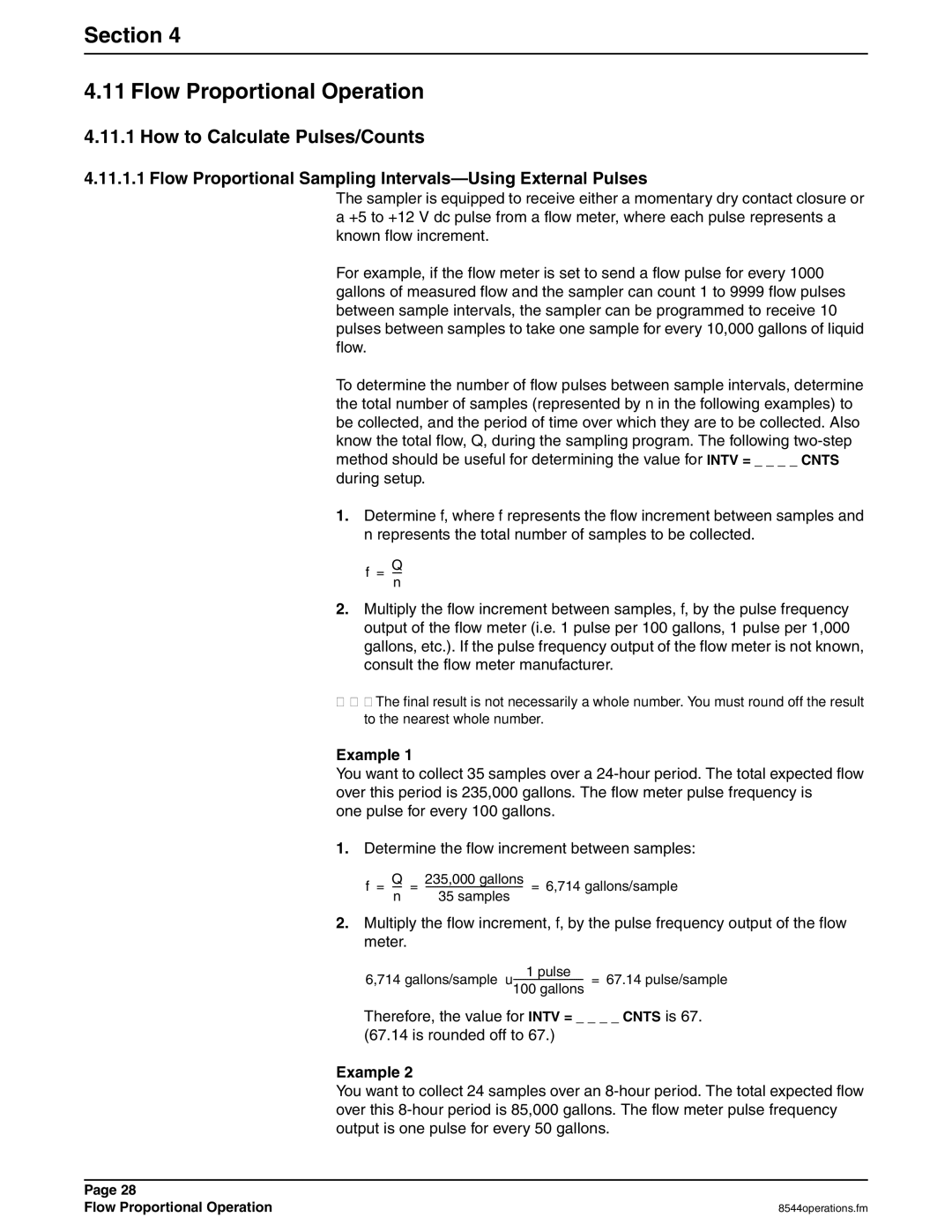
Section 4
4.11 Flow Proportional Operation
4.11.1 How to Calculate Pulses/Counts
4.11.1.1 Flow Proportional Sampling Intervals—Using External Pulses
The sampler is equipped to receive either a momentary dry contact closure or a +5 to +12 V dc pulse from a flow meter, where each pulse represents a known flow increment.
For example, if the flow meter is set to send a flow pulse for every 1000 gallons of measured flow and the sampler can count 1 to 9999 flow pulses between sample intervals, the sampler can be programmed to receive 10 pulses between samples to take one sample for every 10,000 gallons of liquid flow.
To determine the number of flow pulses between sample intervals, determine the total number of samples (represented by n in the following examples) to be collected, and the period of time over which they are to be collected. Also know the total flow, Q, during the sampling program. The following
1.Determine f, where f represents the flow increment between samples and n represents the total number of samples to be collected.
Q f =
n
2.Multiply the flow increment between samples, f, by the pulse frequency output of the flow meter (i.e. 1 pulse per 100 gallons, 1 pulse per 1,000 gallons, etc.). If the pulse frequency output of the flow meter is not known, consult the flow meter manufacturer.
Note: The final result is not necessarily a whole number. You must round off the result to the nearest whole number.
Example 1
You want to collect 35 samples over a
one pulse for every 100 gallons.
1.Determine the flow increment between samples:
Q 235,000 gallons
f =
n 35 samples
2. Multiply the flow increment, f, by the pulse frequency output of the flow meter.
6,714 gallons/sample × | 1 pulse | = 67.14 pulse/sample |
Therefore, the value for INTV = _ _ _ _ CNTS is 67. (67.14 is rounded off to 67.)
Example 2
You want to collect 24 samples over an
Page 28 |
|
Flow Proportional Operation | 8544operations.fm |
